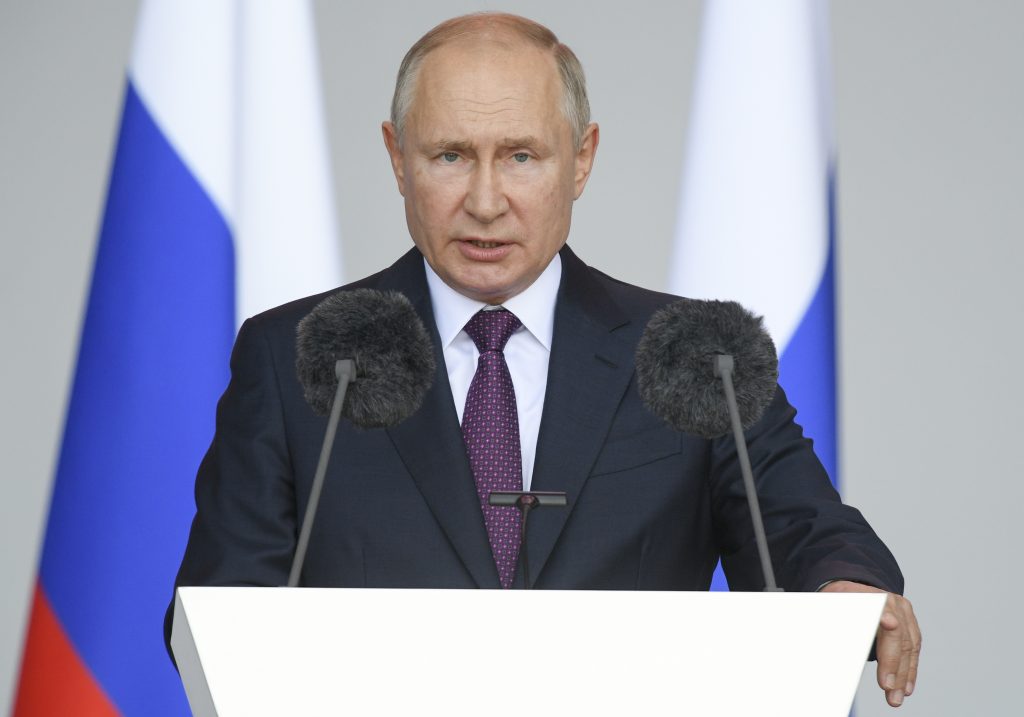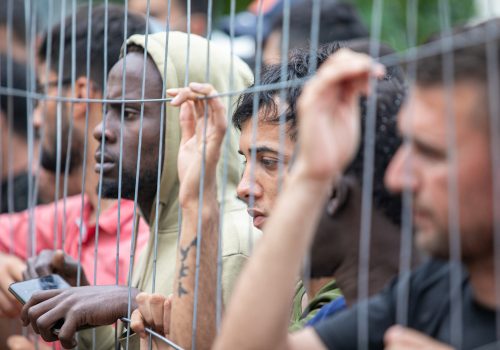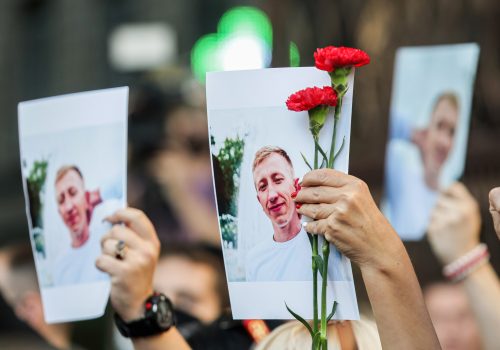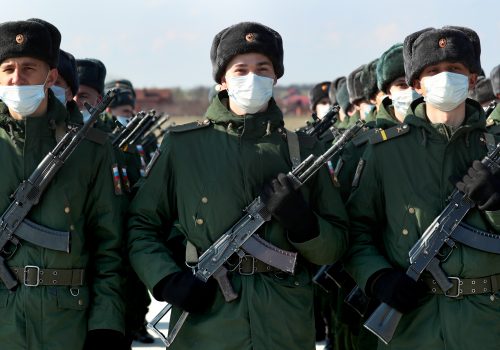Vladimir Putin wished Alyaksandr Lukashenka a happy 67th birthday this week. In a telegram and phone call on August 30, the Kremlin leader stressed that the Belarusian dictator “can always count on Russia’s support.”
Russia’s support, of course, always comes with strings attached. And in this case, the price appears to be turning Belarus into an effective extension of Russia’s Western Military District.
Days before Putin sent Lukashenka his birthday greetings, the Belarusian Defense Ministry announced that Russian anti-aircraft missile troops had arrived in the Western city of Hrodna, near the border with Poland and Lithuania, to set up a joint military training center. Its purpose will be to train Belarusin crews of Russian Su-30SM fighter jets and anti-aircraft missile systems. The Belarusian Defense Ministry also announced that a shipment of Su-30SM fighter jets will arrive in Belarus on September 3.
The joint training center in Hrodna, which is effectively a military base, is one of three facilities the Russian and Belarusian defense ministers agreed to establish during talks in Moscow in March 2021. The other two will be located on Russian territory, in Nizhny Novgorod and Kaliningrad.
The arrival of Russian anti-aircraft troops in Hrodna comes as the integration of the Russian and Belarusian armed forces accelerates in the runup to the Zapad-2021 military exercises, which will see 12,800 troops, including 2,500 from Russia, training in Belarus for a week beginning September 10. It also comes as Russia is rapidly expanding its military footprint in Belarus.
In an interview with Belorusskiy Partizan, military analyst Yegor Lebedok said the establishment of the training center in Hrodna was less about any real need for such a center and more as part of a broad policy aimed at “expanding the Russian military presence in Belarus.” Lebedok added that it was “unclear” whether Russian or Belarusian officers would be in charge of the facility or who would be responsible for giving orders to engage in military combat operations.
Russia and Belarus have conducted a record number of joint military exercises this year in the runup to Zapad-2021. The constant rotation of Russian forces means there is now a de facto permanent Russian troop presence in Belarus. Moreover, Lukashenka also appears ready to drop his long-standing objection to a new Russian airbase on Belarusian territory.
As Russia expands its military presence in Belarus, the political integration of the two countries seems to be picking up steam. Lukashenka is scheduled to travel to Moscow on September 9, on the eve of the Zapad exercises, for what will be his fifth meeting with Putin this year. The two are expected to sign a package of so-called “roadmaps” facilitating deeper political and economic integration between Russia and Belarus.
Eurasia Center events

Russia’s militarization of Belarus is happening as Moscow is also steadily expanding its force presence in its already heavily militarized Western exclave of Kaliningrad, which borders NATO members Lithuania and Poland. In May, Russian Defense Minister Sergei Shoigu announced the deployment of “some 20 major military units in the Western Military District before the end of 2021.”
The new base in Hrodna, the steady expansion of Russia’s military footprint in Belarus, the increased force presence in Kaliningrad, and the upcoming Zapad exercises have all put Belarus’s neighbors on high alert. Noting that “exercises have sometimes become a source of military aggression,” Polish Defense Minister Marcin Ociepa recently commented, “we have to be prepared for all scenarios.”
Ociepa added that the combination of Russian-Belarusian military exercises, the new joint training base, and the migrant crisis Lukashenka has manufactured on Belarus’s western borders all serve to create a combustible security situation. “The most probable scenarios are provocations on the border, since Russian troops will be located very close to Poland’s borders. They will be deployed at Belarusian training grounds and airfields in close proximity to those border events related to migration activity,” he noted.
The growing Russian military presence in Belarus, Lukashenka’s weaponization of illegal migrants, and the ongoing Russian arms buildup in Kaliningrad dramatically alter the equation on NATO’s eastern flank. This poses a mounting threat to the security of Latvia, Lithuania, and Poland. It is becoming increasingly apparent that Putin has successfully exploited Lukashenka’s international isolation and vulnerability to accelerate Moscow’s long-standing goal of turning Belarus into a de facto extension of Russia’s Western Military District.
Brian Whitmore is a Nonresident Senior Fellow at the Atlantic Council’s Eurasia Center, an Assistant Professor of Practice at the University of Texas at Arlington, and host of The Power Vertical Podcast.
Further reading
The views expressed in UkraineAlert are solely those of the authors and do not necessarily reflect the views of the Atlantic Council, its staff, or its supporters.

The Eurasia Center’s mission is to enhance transatlantic cooperation in promoting stability, democratic values and prosperity in Eurasia, from Eastern Europe and Turkey in the West to the Caucasus, Russia and Central Asia in the East.
Follow us on social media
and support our work
Image: Russian President Vladimir Putin is exploiting Belarusian dictator Alyaksandr Lukashenka's international isolation to transform neighboring Belarus into an unofficial extension of Russia's Western Military District. (Ramil Sitdikov/Russian Presidential Press Office/TASS via REUTERS)




